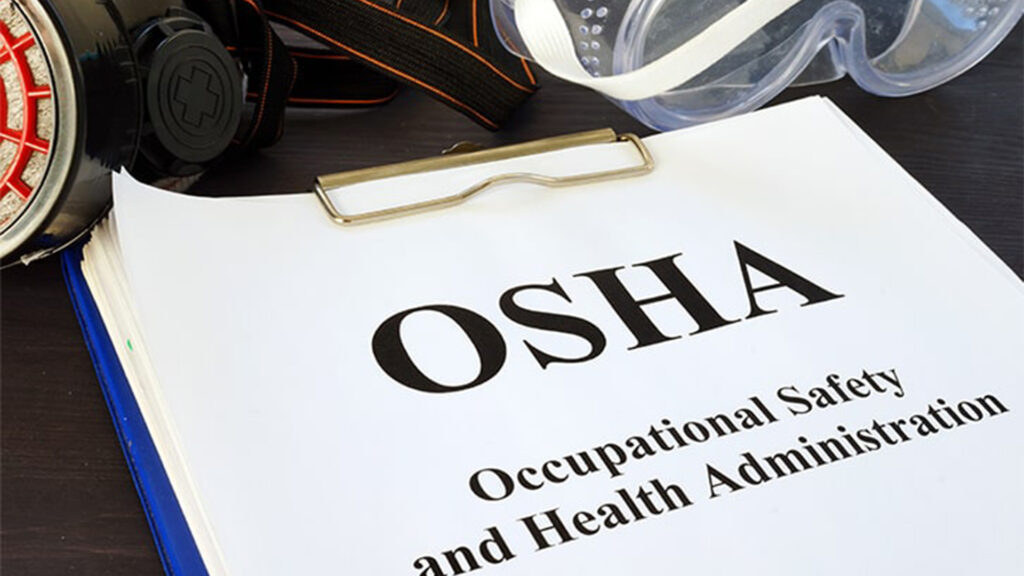It’s that time of year again! Beginning today, February 1, employers in the United States covered by OSHA’s Recordkeeping Rule are required to post a signed copy of their Form 300A Summary of Work-Related Injuries and Illnesses in a location accessible to employees.
Despite this annual obligation, many employers forget to post their 300A or make of common mistakes, some of which can leave you out of compliance with the Recordkeeping Rule.
Let’s take one last review of OSHA’s injury and illness recordkeeping requirements to make sure we’re correctly meeting our obligations.
Who’s Covered?
OSHA’s Recordkeeping Rule covers all employers with 11 or more employees at any time during the calendar year, unless their NAICS code is included on the Partially Exempt List. All employers covered by the rule are required to keep occupational injury and illness records including the Log of Work-Related Injuries and Illnesses (Form 300), individual Injury and Illness Incident Reports (Form 301) for each recordable injury or illness, and the Form 300A Summary of Work-Related Injuries and Illnesses.
It’s important to remember that even though employers with ten or fewer employees or who are partially exempt are not required to maintain OSHA Forms 300, 301 and 300A, they are still required to report all worker fatalities (within eight hours), hospitalizations (within 24 hours) and incidents involving amputation or loss of eye (within 24 hours) directly to OSHA by calling 1-800-321-6742 or filing a report online.
How Do You Complete and Post Form 300A?
If your establishment is covered under OSHA’s recordkeeping rule, you must complete and post your Form 300A Summary of Work-Related Injuries and Illnesses for the previous calendar year by February 1. The form must be posted in a location that is clearly visible to employees, as well as new employment applicants. This summary must remain posted until April 30, after which it can be taken down.
Common Mistakes Regarding the 300A
To help you stay in compliance, here are some of the most common mistakes that OSHA cites under the Recordkeeping Rule:
- Not signing the 300A before posting, or not having a management representative with high enough authority within the company sign it – OSHA requires a “company executive” to sign the form prior to posting. This reflects OSHA’s intent that the signer should be an individual with a high degree of responsibility and authority at the establishment. Since the signature certifies that the information in the document is “true, accurate, and complete,” OSHA considers this a crucial step, and views unsigned forms as being incomplete and out of compliance.
- Posting outdated forms – Before posting new forms, ensure that any old or outdated forms have been taken down. Posting forms from years other than the current reporting year (RY 2020) can confuse employees, and OSHA can potentially cite a facility with outdated or conflicting forms posted in the workplace.
- Not posting a 300A if there were no recordable injuries – All covered employers must fill out and post the 300A summary annually, even if no recordable work-related injuries or illnesses occurred during the reporting year. You still need to record “zeroes” in the appropriate data fields.
- Confusing establishment size for company size in determining applicability – Remember that recordkeeping applicability is determined by company size, not establishment size. While an individual establishment might have ten or fewer employees, if the company is in an industry subject to the recordkeeping rule and has 11 or more employees total, then every individual establishment or workplace under the control of that company must still complete and post its own Form 300A summary. Furthermore, the information summarized on the form must be for that specific establishment, rather than a summary of information for the company, as a whole.
- Misinformation or mistakes on the form – Injury classification errors, inaccurate Form 300 data, and incorrect numbers of days away, restricted or transferred (DART) are all common recordkeeping mistakes found on the 300A. Mistakes on the Form 300 log can easily result in errors on the 300A summary. For example, if you double-count the same injury or illness as both a “restricted duty” and a “days away from work” case, it will skew the tallies of those categories on the 300A. To ensure your forms include the most accurate and correct information, it’s a good practice to revisit your records at least every quarter and update it as needed.
Electronic Injury & Illness Reporting Deadline
For establishments who also need to submit electronic 300A summary data directly to OSHA via the Agency’s Injury Tracking Application (ITA), it’s more important than ever to ensure that your injury and illness information is accurate. Establishments covered by OSHA’s electronic reporting requirements must submit their RY 2020 injury and illness summaries by March 2. More details about the electronic reporting requirement can be found here.
Still have questions?
Be sure to check out our on-demand webinar, OSHA’s Recordkeeping Standard: Your Guide to Compliance, which offers a comprehensive review of the most recent updates to the Recordkeeping Standard, current Electronic Reporting applicability and due dates, and best practices for ensuring compliance.
Let VelocityEHS Help!
Our easy-to-use Incident Management solution helps streamline OSHA recordkeeping and reporting compliance by automatically generating your OSHA Form 300, 301 and 300A injury and illness summaries which you can easily print and post on-site each February. You can also automatically complete and instantly generate properly formatted 300A forms for direct electronic submission to OSHA’s Injury Tracking Application (ITA).
In addition, the award-winning VelocityEHS Mobile App helps you better manage workplace incidents by engaging your front-line workers to instantly report accidents, near misses and hazards as they occur – with or without internet connectivity – via a smartphone or tablet device for faster, more detailed and accurate accounts of reportable incidents.
Contact us or Request a Demo today to learn more about how we can help you and be sure to follow us on Social Media!
